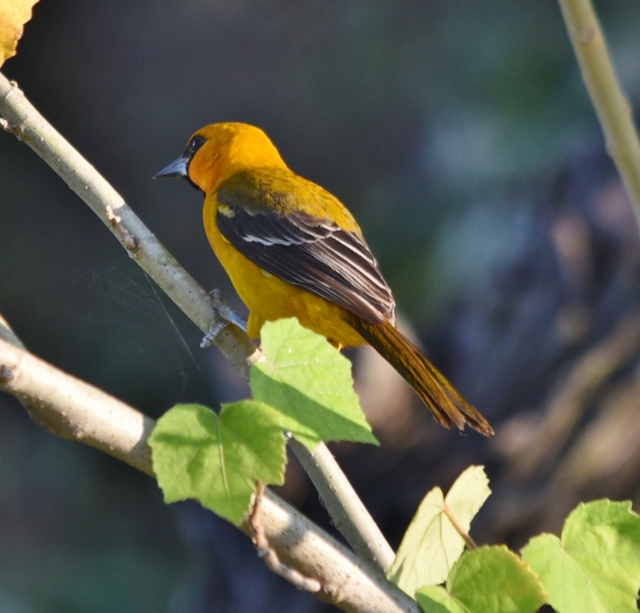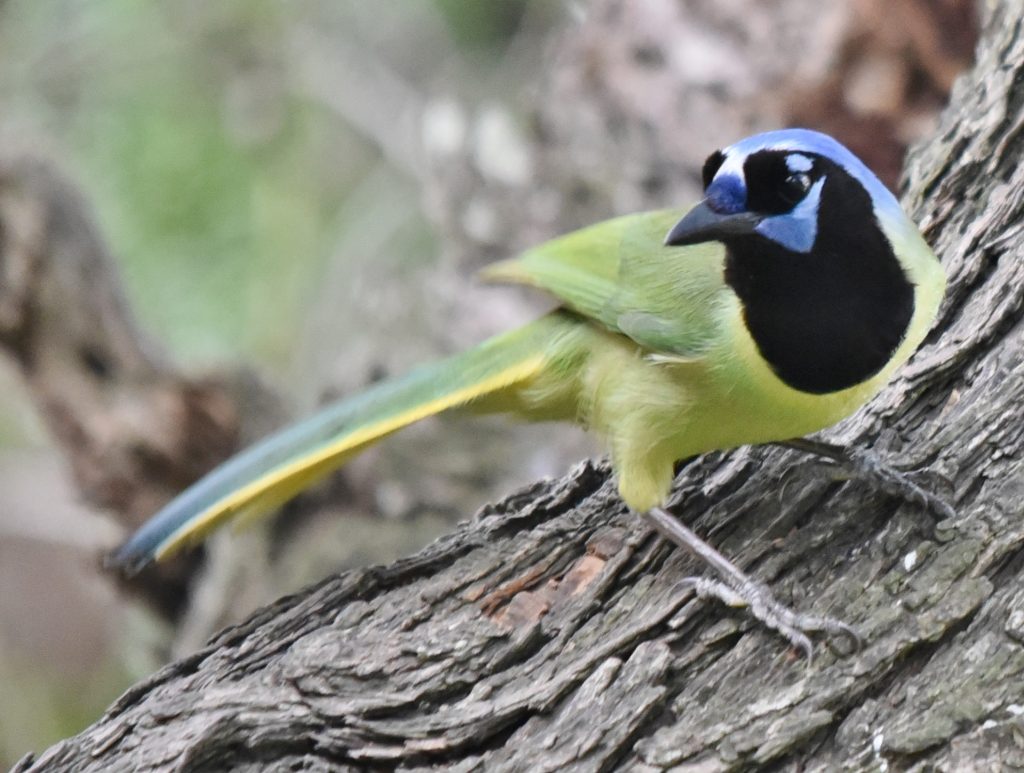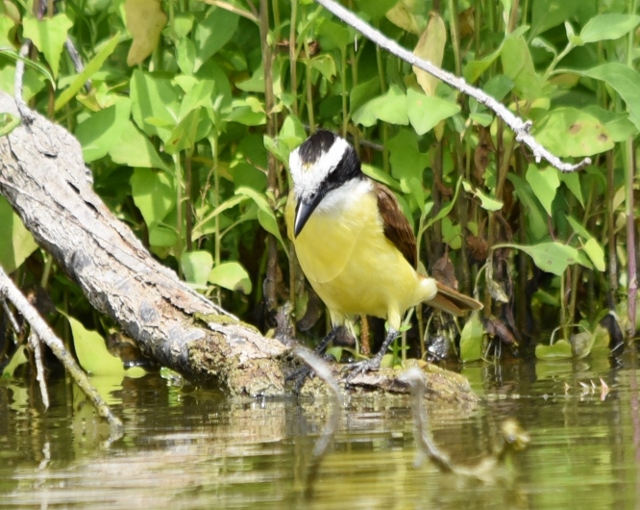Story and photos by Anita Westervelt, Texas Master Naturalist
Grab your most comfortable travelling chair, pair of binoculars and park yourself inconspicuously near an old mesquite tree.

There’s nothing like the antics of a black-crested titmouse to elicit a full belly laugh. They’re tiny, quick and wily often jetting through a tree canopy, clinging to a branch upside down or quick-stepping around it while snapping up unseen insects from the bark.
Diet: Insects, caterpillars, wasps, bees, beetles, insect eggs and pupae, spiders and snails and seeds, nuts, berries and small fruits.
Sound: A cheerful Peter, Peter, Peter.

The lyrical melody from an Altamira oriole is as soothing as a glimpse of its bright orange head and underparts is exciting. Its northern most range is the southern tip of Texas. It builds the longest nest of any bird in North America which resembles a narrow bag nearly two feet long woven from vines, palm fibers, long grasses and other plants.
Diet: Insects, grasshoppers, crickets, caterpillars, ants and spiders, and berries and small fruits like hackberries and figs.
Sound: Repeating clear flutelike whistles.

Bright yellow, green and azure blue flashes are the attention-grabbers of the green jay, a bird that will use sticks as tools to extract bugs from tree bark; its northern most home is south Texas.
Diet: Insects, spiders, small vertebrates, eggs and young of other birds, fruits and berries and seeds of grass, weeds and trees.
Sound: Raucous scolding of incessant chit, chit, chit when agitated.

A clatter of chatter announce the early morning arrival of a team of great kiskadees, engaging in aeronautical fun — especially near a swimming pool — hawking for insects while displaying sharply contrasting deep yellow bellies and bright cinnamon wing feathers.
Diet: Large insects like beetles, wasps, grasshoppers, bees, moths, lizards, mice, baby birds and many berries, small fruits and some seeds. Near water, will perch low and dive in to catch small fish, frogs and tadpoles.
Sound: Startlingly shrill shriek of kiss-ka-dee!

Look on the ground for the curve-billed thrasher. A solitary terrestrial feeder, it digs vigorously into the ground with its bill and turns aside leaf-litter and other items, searching for food.
Diet: Insects and their larva, beetles, ants, grasshoppers, wasps, spiders, centipedes, snails, berries, fruits and seeds of cactus like prickly-pear.
Sound: A sharp whit-wheet, sometimes melodic.

The whimsical, brazen northern mockingbird rounds out this tale of Valley birds to watch. In the same family as the curve-billed thrasher, mockingbirds also forage on the ground displaying a wing-flicking dance to disrupt insects.
Diet: Half from insects and other arthropods, including beetles, grasshoppers, caterpillars, ants, wasps, spiders, snails, sowbugs and earthworms; other half from berries and fruits.
Sound: An unattached male will sing you a pretty love song during breeding season — at top decibel and well into the night. Mockingbirds have melodic songs of their own and can mimic hundreds of sounds, like machinery, frogs, barking dogs, door bells and other birds.
Other native trees for viewing our colorful birds are Texas ebony, and sugar and spiny hackberries as they, too, are full of insects.